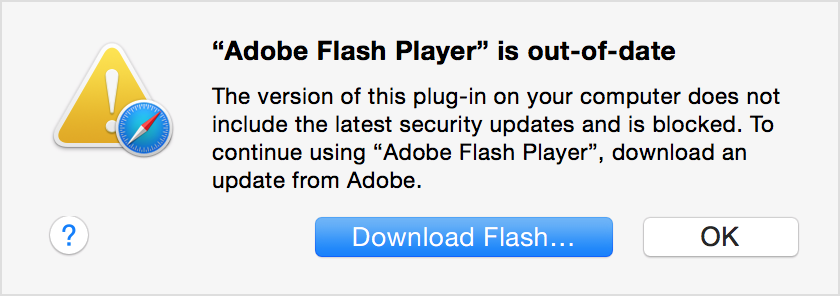Adobe Flash Player Shockwave For Mac
Adobe is changing the world through digital experiences. Our creative, marketing and document solutions empower everyone — from emerging artists to global brands — to bring digital creations to life and deliver them to the right person at the right moment for the best results. Before you start, check the version of Safari running on your Mac. To display the version number, choose Safari > About Safari. If your Safari version is 11.0 or later, follow the steps in For Mac OS X 10.11, macOS 10.12, and later.

In this post, we will show you how to enable and disable the Adobe Flash Player on Google Chrome, Firefox, Opera and Edge browsers on Windows 10. Enable Adobe Flash Player on Chrome 1) Open your Google Chrome browser, type chrome://settings/content in the address bar and press Enter.
2) On the content settings screen, locate Flash player settings. Select Allow sites to run Flash, then click Done to save the change. 3) If you want to add more sites that allow Flash Player, click the Manage exceptions button. 4) Type in the site address here and then click Done to save the change. Enable Adobe Flash Player on Firefox 1) Open your Firefox browser, on the top-right corner, click the three-bar icon and click Add-ons.
2) On the left side, click Plugins. Then click Shockwave Flash and select Always Activate from the drop-down menu. 3) If you want to disable it, just click Never activate. Enable Adobe Flash Player on Opera 1) Open a blank page in Opera.
Press the Settings button, which is on the side menu bar on the left side. Then click Websites. Text files mac numbers. Scroll down a little bit and click Manage Individual plug-ins under Plug-ins category.
2) Make sure you’re seeing a Disable button here if you are to enable your Adobe Flash Player. Enable Adobe Flash Player on Edge 1) Open Edge browser. On the top right corner, click the three-dot icon and then Settings. 2) Scroll down and click View advanced settings.
3) Make sure the option for Use Adobe Flash Player is on. 4) Refresh your web page to view the change.
Adobe Flash Player is a free software plug-in used by web browsers to view multimedia, execute rich Internet applications, and stream video on your Mac. Adobe Flash Player is the most popular multimedia player plug-in available. However, recently there have been security concerns which has threatened its popularity as users seek safer alternative solutions. Opera, Firefox and Chrome contain built-in versions of Flash running in sandbox mode.
Best pdf converter for mac. This method is safer than running Flash as a plugin. However, currently the reality is that you still may need the Adobe Flash Player on your Mac because many websites will not work well if you uninstall it. Here I’ll show you how to install Adobe Flash Player and how to set it up correctly. How to install Adobe Flash Player on your Mac. Go to to download the Adobe Flash Player installer. By default, the installer package will be downloaded to your “Downloads” folder.
Select the file on your Mac and double click to install it. Select “Allow Adobe to install updates (recommended)” and click “DONE” to complete the installation.
The journaling category in the Mac and iOS App Stores is a little less crowded than other categories, but there are a few great contenders. Day One has been the best journaling app for Mac since it was first introduced in March 2011 and its iOS apps have held the crown ever since they were introduced. Best news app for mac. Perhaps the most high-profile journaling app out there right now, Day One has grown from very simple and minimalist beginnings to offer a host of features today: cloud-based back up and syncing.
If you installed Adobe Flash Player, but still cannot view online videos on certain websites, you need to check Adobe Flash Player on your browsers. How to set up Adobe Flash Player on various browsers. Launch Safari and go to the Apple menu bar and click Preferences.
Select the Websites tab and select On for “When visiting other websites.” 3. Refresh the browser tab, or restart the browser. Google Chrome 1. Launch Chrome and type in the address field.